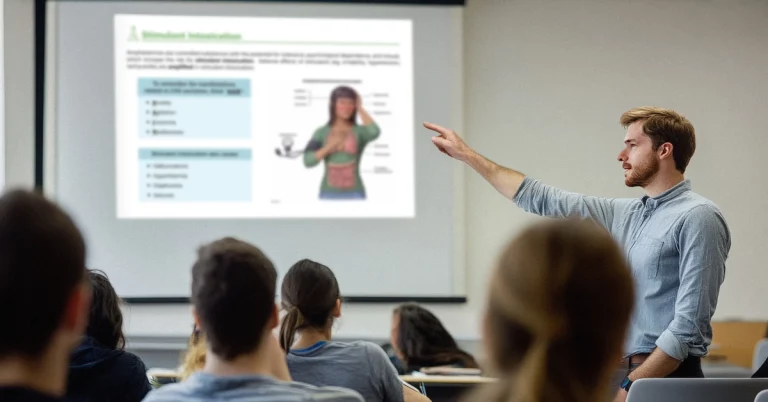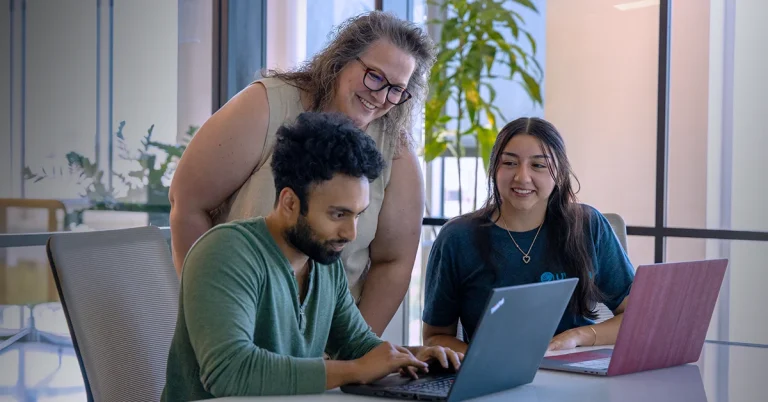By Emily N. Giddings, MSN, RN, CNE, CCRN
Time available for teaching, learning, and evaluation is more scarce than ever due to pandemic-related limitations on classroom and clinical gatherings. Fortunately, nursing’s recent strides utilizing distance and simulation technologies offered some flexibility in our response to these limitations.
However, the distance chasm created new barriers of its own, particularly in the ability of faculty to have rich, one-on-one feedback sessions and provide individualized student guidance. In this article we will outline some strategies to fit it all in during the post-midterm rush.
First, Expect the Unexpected
The institutions we rely on to provide students with clinical learning experiences are not guaranteed to remain available to us through the duration of the semester. We have seen during the past year that a student exposure at the clinical site, a sudden staff exodus, or a catastrophic loss of power are all very real possibilities that may cut your clinical availability in half without notice.
Having backup plans in place in the event of such upheavals can save you the stress and countless lost hours of scrambling for solutions. Depending on your board of nursing’s requirements and institution’s flexibility, consider these nontraditional options for fitting it all in:
Lean on Simulation
Evidence has shown that it is not the number of clinical hours completed but rather the quality of experience gained that is responsible for simulation’s improvement in student outcomes (National Council of State Boards of Nursing [NCSBN], 2016).
This is great news for educators and students whose time commitments are so fragile. Although simulated clinical experiences may not fully substitute real patient encounters, the simulation environment can allow controlled introduction of learning experiences based on course objectives and provide valuable opportunities for debriefing and evaluation.
Interprofessional Opportunities
If you’re already scrambling for time, creating new interprofessional education (IPE) activities from the ground up may not be feasible. However, you may find that other educational institutions in your community have existing IPE days or activities that can be easily scaled up to allow additional groups of students. Contact other institutions early to identify availability of such opportunities and gauge flexibility to allow your participation.
Stay Later at Your Clinical Sites
An extra hour or two each clinical day can pay significant dividends in the event that future clinical availability is canceled. Most clinical days have students pulled away for post-conference just over halfway through a traditional 12-hour shift.
While students are present for the “morning rush,” medication passes, and interdisciplinary exchanges, they also spend a considerable amount of time simply watching the primary nurse document in the electronic medical record or helping with delegated routine tasks.
Staying later in the day allows more time for students to participate in evaluating intervention efficacy and conducting longer-term patient planning. Some clinical sites even permit students during night shift, where there is more time for discussion and debriefing in between interventions.
Take Advantage of “Small Pauses”
Even before the pandemic, it was unrealistic to anticipate each student’s clinical day to unfold on a schedule. However, these small pauses between meaningful interventions offer opportunities to fit in much-needed evaluation activities.
If the patient leaves the unit for imaging or a procedure, or if something else delays patient care like waiting on a lab result or medication to be sent, ask your students to find you when the primary nurse sits down to document. Use these breaks to sit down with students and begin your formative evaluation sessions early. The best use of extra time found during the day will be to go toward evaluation, discussion, and debriefing rather than direct patient care.
Time-Saving Strategies
Less time doesn’t have to mean overextending yourself. Here are some tips to surviving the post-midterm rush and setting yourself up for success in future semesters:
Clearly Define Expectations
Setting clear expectations for your students doesn’t benefit only them. In fact, a survey found that distance faculty regarded clear, mutually-understood expectations as the most helpful strategy for time management (Oyarzun et al., 2020). Consider how thoroughly expectations have been communicated to your students in all course content: lectures, clinical days, and assignments. Be as specific as possible.
Break Content Down into Segments
Dividing course content into modules has proven a useful strategy that can also be applied to other aspects of the course (Oyarzun et al., 2020). For example, you can use the Clinical Judgment Measurement Model as a framework to hone students’ focus during clinical encounters and structure debriefing (NCSBN, 2019).
The first third of clinical debriefings might focus on Forming Hypotheses, the second on Refining Hypotheses, and the final on Evaluating Outcomes. Not only does this help focus your students’ attention, but it also enables you to methodically gather students’ examples to include in their summative clinical evaluations.
Establish Boundaries
The hybridization of courses has blurred the lines between black-and-white separation of faculty’s work and personal hours (Cross & Polk, 2018). If your learning management system and work email are bombarding you with notifications around the clock, this prevents you from having true rest and encourages early burnout. Consider turning off notifications and keeping defined office hours rather than meeting with students at random or by appointment.
Crowdsource When Possible
Your students will be asked to perform self and peer evaluations once they are practicing nurses, so asking them to do so now serves double duty by both preparing them for workplace dynamics and decreasing your own workload burden.
Most of your students’ clinical activities occur apart from your direct supervision, so asking them to provide examples of certain activities can also enhance the available data from which you’re making evaluation judgments. Rather than completing blank clinical evaluations for each student, ask them to fill out their own evaluation forms providing examples of how they’ve met each objective.
Such introspection is a form of reflection that facilitates transition to practice (Raterink, 2016). Randomly pairing students to complete peer evaluations teaches students to rely on rubrics to clearly understand expectations while also giving you greater flexibility to complete other coursework (Dunlap & Lowenthal, 2018).
Don’t Dismiss Pre-Made Learning Activities
There are several resources available to your students that can provide rich learning experiences with little to no faculty time commitment or moderation. Consider the online resources provided by your course textbooks such as sample patient case studies that your students can dissect.
Few things can prepare your students for board exams as well as the specific, deliberate practice offered by robust question banks. The UWorld question bank even has functionality allowing faculty to review student performance. Given that both good question banks and your own curriculum are consistent with official NCLEX® test plans, students can make significant strides toward meeting objectives with a minimal time investment spent answering practice questions.
If you’d like to learn more about how the UWorld question can help, contact us through the Institutional Pricing form here. Do you have other ideas to reduce stress and optimize time for faculty? Get in touch with us as we’d love to hear other ideas or how the ideas here may have helped you.
References
Cross, T., & Polk, L. (2018). Burn bright, not out: Tips for managing online teaching. Journal of Educators Online, 15(3), 1–6. https://www.thejeo.com/archive/archive/2018_153/cross_polkpdf
Dunlap, J. C., & Lowenthal, P. R. (2018). Online educators’ recommendations for teaching online: Crowdsourcing in action. Open Praxis, 10(1), 79–89. https://doi.org/10.5944/openpraxis.10.1.721
National Council of State Boards of Nursing. (2016). NCSBN simulation guidelines for prelicensure nursing education programs. NCSBN. https://www.ncsbn.org/16_Simulation_Guidelines.pdf
National Council of State Boards of Nursing. (2019). The NCSBN Clinical Judgment Model. NCSBN. https://www.ncsbn.org/NGN_Spring19_Eng_04_Final.pdf
Oyarzun, B., Martin, F., & Moore, R. L. (2020). Time management matters: Online faculty perceptions of helpfulness of time management strategies. Distance Education, 41(1), 106–127. https://doi.org/10.1080/01587919.2020.1724773
Raterink, G. (2016). Reflective journaling for critical thinking development in advanced practice registered nurse students. Journal of Nursing Education, 55, 101–104. https://doi.org/10.3928/01484834-20160114-08





